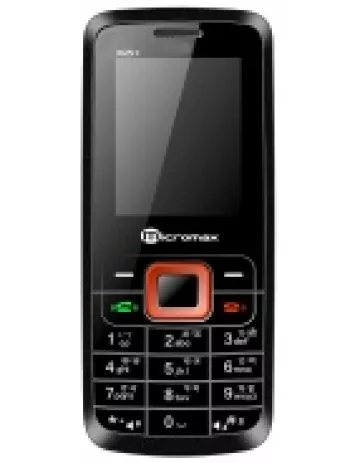
Network and Connectivity
The Micromax A25 is built on GSM technology, incorporating 2G bands of GSM 900 and 1800 across both SIM slots. This dual SIM functionality allows users to maintain two lines simultaneously, which was quite a modern feature at the time of its release. Moreover, the device supports GPRS Class 12 and EDGE Class 12 for basic internet connectivity.
Launch and Availability
Announced and released in October 2012, the Micromax A25 marked an era when smartphones started becoming more affordable and accessible in emerging markets. Although it offered limited functionality by today's standards, its affordability made it a compelling option for budget-conscious consumers. The device has since been discontinued.
Body and Design
The device boasts compact dimensions of 104.5 x 56 x 13 mm and weighs just 102 grams, making it easy to handle and carry. Its minimalist design was typical for budget smartphones at the time, featuring a black plastic body that houses the removable battery. It fits comfortably in one hand and was approachable for users who preferred devices optimized for ease of use.
Display
The Micromax A25 sports a TFT display with 256K colors on a compact 2.8-inch screen. With a screen resolution of 240 x 320 pixels and a density of approximately 143 ppi, the display offered a modest viewing experience with vibrancy suitable for basic tasks and media consumption. Its screen-to-body ratio of 41.5% emphasizes the compact nature of the device.
Platform and Performance
Running on Android 2.3.6 Gingerbread, the Micromax A25 utilized the Mediatek MT6515 chipset, combined with a 1.0 GHz Cortex-A9 CPU and a PowerVR SGX531 GPU. This hardware setup provided basic performance capabilities suitable for day-to-day tasks, including calls, texting, and basic internet browsing. The Android Gingerbread OS was user-friendly, though app support was limited compared to more modern Android versions.
Memory and Storage
The device comes with 256MB of RAM, providing just enough memory for essential multitasking. Internal storage is limited to 512MB but is expandable through a microSDHC card slot, allowing users to integrate additional storage to accommodate media and apps.
Camera
The Micromax A25 is equipped with a single 1.3 MP main camera. While it lacks advanced photographic capabilities, it serves the purpose of capturing basic images and videos. The camera functionality was considered adequate for the device's price range, providing users with a no-frills photo-taking experience.
Sound and Audio
For audio, the A25 offers a loudspeaker and a 3.5mm headphone jack, facilitating a satisfactory audio experience for calls and media playback. The inclusion of an FM radio further diversifies its audio capabilities, allowing users to tune into their favorite radio stations on the go.
Connectivity
Connectivity options for the Micromax A25 include Wi-Fi 802.11 b/g/n, Bluetooth 2.1, microUSB 2.0, and FM radio. Notably absent are positioning services, NFC, and more advanced Bluetooth versions, which limited its capabilities compared to higher-end models. However, it effectively met the essential connectivity needs of its target audience at the time.
Sensors and Features
The device houses basic sensor technology, including an accelerometer, which enhances its functionality in apps and games that rely on motion detection. Given its budget status, additional sensor features common in more expensive phones are not present on this model.
Battery Performance
The A25 is powered by a removable Li-Ion 1280 mAh battery, offering up to 180 hours of standby time and up to 4 hours of talk time. This battery performance was typical for non-smartphone usage patterns prevalent at the time, ensuring that users could rely on the device for a full day of light use without frequent recharging.
Price and Market Impact
With an initial price of about 50 EUR, the Micromax A25 appealed to cost-sensitive consumers looking to transition from feature phones to smartphones. Its affordability, combined with dual SIM capabilities and basic Android functions, helped it capture a significant segment of the market, especially in emerging economies.
Conclusion
The Micromax A25 reflects a snapshot of the smartphone industry's evolution toward making technology accessible to a broader audience. While the device's capabilities are modest compared to modern standards, its role in democratizing smartphone ownership is noteworthy. As technology progressed, so have consumer expectations, which renders the A25 a relic of its time, showcasing the rapid evolution of mobile technology in the past decade.
Key Features of Micromax A25
- Dual SIM capability (Mini-SIM)
- Powered by Android 2.3.6 (Gingerbread)
- 1.0 GHz Cortex-A9 processor with Mediatek MT6515 chipset
- Expandable storage via microSDHC card slot
- Wi-Fi 802.11 b/g/n connectivity
- FM radio support
- 3.5mm headphone jack
- Compact and lightweight design (102 g)
- Cost-effective pricing (Approximately 50 EUR)
Micromax A25 Drawbacks
- Discontinued product, no longer supported or available for purchase.
- Only supports 2G technology, lacking modern 3G/4G connectivity.
- Very low internal storage of 512MB which limits app installations and media storage.
- Only 256MB RAM, which can severely impact performance and multitasking capabilities.
- Outdated Android 2.3.6 (Gingerbread) operating system, lacks support for modern applications and updates.
- Low-resolution display with a small 2.8-inch screen and 143 ppi density.
- Only a single 1.3 MP main camera with no dedicated selfie camera.
- Lacks GPS positioning technology.
- No NFC support for modern contactless payments.
- Battery life is quite limited, with only a 1280 mAh capacity and up to 4 hours of talk time.
- No support for HSPA or LTE networks, which results in lower data speeds.

View Also
More Phones
All Rights Reserved +14266 Phones © Mobilawy 2025

























